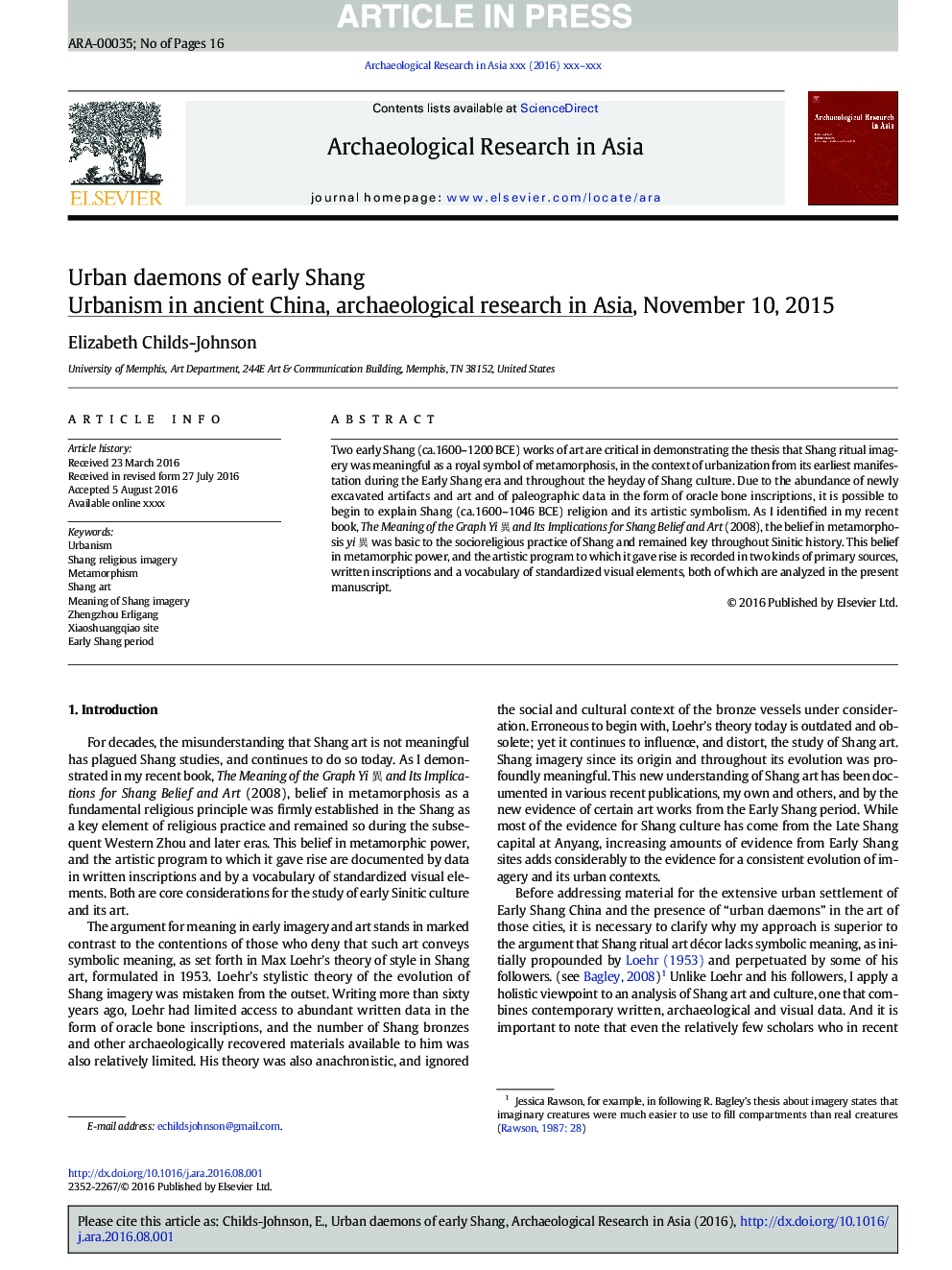| Article ID | Journal | Published Year | Pages | File Type |
|---|---|---|---|---|
| 7440189 | Archaeological Research in Asia | 2018 | 16 Pages |
Abstract
Two early Shang (ca.1600-1200Â BCE) works of art are critical in demonstrating the thesis that Shang ritual imagery was meaningful as a royal symbol of metamorphosis, in the context of urbanization from its earliest manifestation during the Early Shang era and throughout the heyday of Shang culture. Due to the abundance of newly excavated artifacts and art and of paleographic data in the form of oracle bone inscriptions, it is possible to begin to explain Shang (ca.1600-1046Â BCE) religion and its artistic symbolism. As I identified in my recent book, The Meaning of the Graph Yi ç° and Its Implications for Shang Belief and Art (2008), the belief in metamorphosis yi ç° was basic to the socioreligious practice of Shang and remained key throughout Sinitic history. This belief in metamorphic power, and the artistic program to which it gave rise is recorded in two kinds of primary sources, written inscriptions and a vocabulary of standardized visual elements, both of which are analyzed in the present manuscript.
Keywords
Related Topics
Social Sciences and Humanities
Arts and Humanities
History
Authors
Elizabeth Childs-Johnson,
